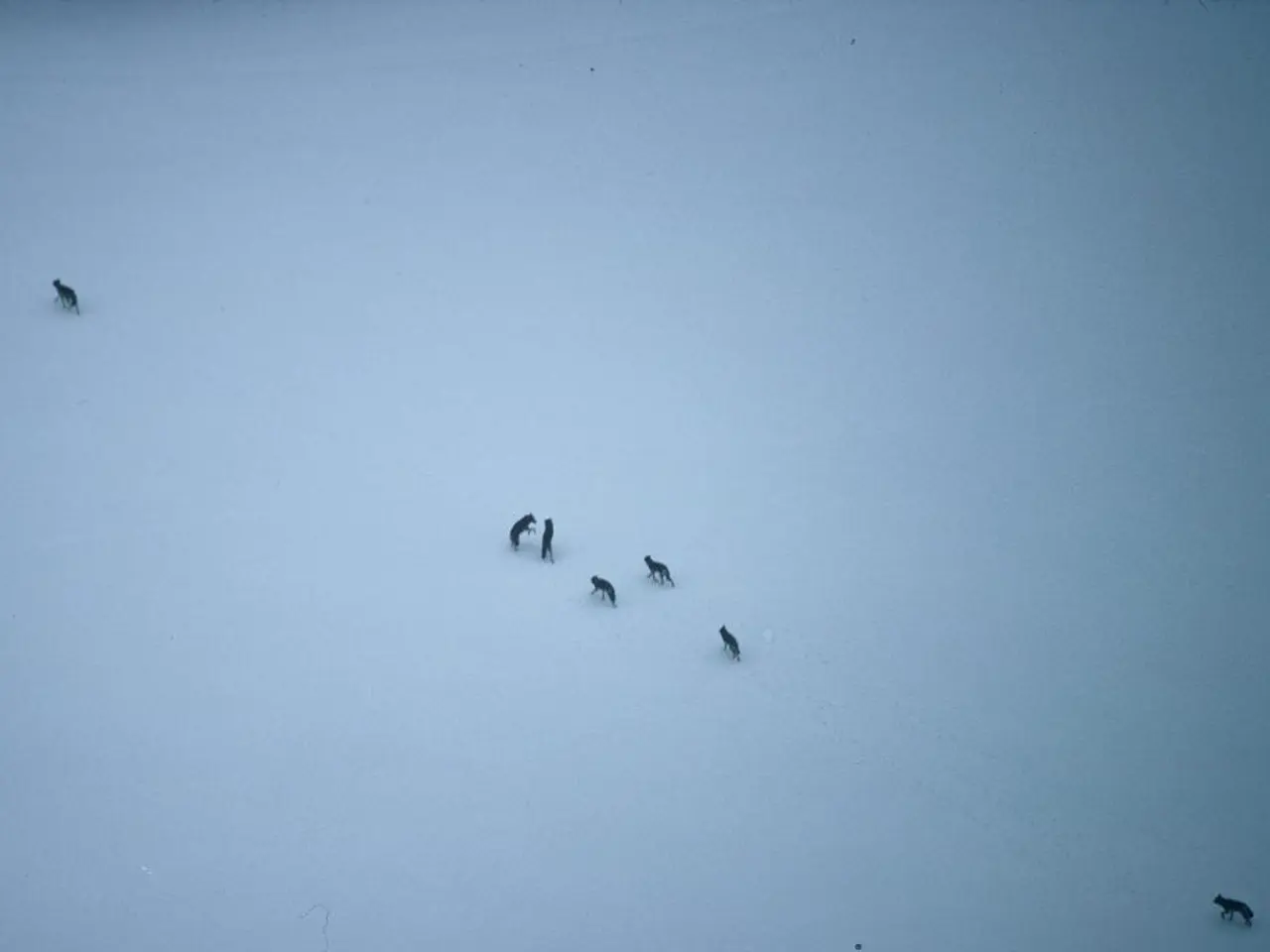Tirol Intensifies Wolf Eradication Efforts
In the Austrian state of Tyrol, the issue of wolf management has become a pressing concern for farmers and the tourism industry, as alpine farming with cows, sheep, and goats is economically important and holds high tourist value. The governor of Tyrol, Anton Mattle (ÖVP), has proposed expanding the hunting of wolves to protect over 2,000 alpine pastures in the region.
Tyrol's chief hunter, Larcher, holds a contrasting view. He believes the significance of the wolf as a regulating element in the natural cycle is greatly underestimated. Wildlife protection organizations like WWF view the wolf as a natural health police, primarily preying on sick and weak ungulates.
The Protection Center for Bears, Lynx, and Wolves reported that ten years ago, there were only eight recorded wolves in Austria. Currently, approximately 100 wolves are estimated to roam Austria, primarily in Carinthia and Tyrol, but also in Salzburg and Vorarlberg.
To address this issue, Austria employs a combination of scientifically evaluated herd protection measures and limited removal of problematic wolves. In 2024, the University of Veterinary Medicine Vienna completed a draft evaluation scheme for practical herd protection techniques on alpine pastures across several Austrian states, including Tyrol. These measures focus on protecting sheep and goats using methods such as herding with night pens, fencing, and livestock guarding dogs.
The authorization of wolf removal suggests that lethal control is seen as an option when protection measures fail, but legal challenges highlight the complex balance between conservation and livestock protection. Cross-border cooperation and improved monitoring are enhancing data-driven decisions and stakeholder communication, which is critical for long-term coexistence strategies.
The more cautious behavior of farmers and better protection of animals or removal from pasture in case of danger also play a role in managing wolf populations, according to the Protection Center. Austria's Agriculture Minister Norbert Totschnig (ÖVP) believes that the EU is now on track after years of negotiation regarding wolf management.
As of 2023, around 35 wolves have been shot in Austria, according to the Protection Center. For hunters in Austria, a shooting permit often results in immediate action, as it is easier to shoot a wolf that has lost its fear of humans than one that has attacked livestock.
The recent trials of herd protection measures are still under scientific review, but the evaluation scheme developed promises a more targeted and condition-specific approach, likely improving protective outcomes for livestock over generic methods. Under broader Central European projects like LECA, efforts are made to improve monitoring of large carnivores including wolves, and to implement conflict prevention measures through stakeholder engagement and scientific consultation across Alpine and Carpathian regions.
In Germany, Agriculture Minister Alois Rainer estimates that there are around 2,500 wolves, more per area than in Russia. This highlights the need for Austria to find a balanced approach to wolf management that respects both conservation efforts and the needs of its agricultural community.
[1] University of Veterinary Medicine Vienna, 2024. Draft Evaluation Scheme for Practical Herd Protection Techniques on Alpine Pastures. [2] Südtiroler Tageszeitung, 2025. Wolf cull halted by court in Upper Vinschgau. [3] Südtiroler Tageszeitung, 2025. Wolf cull resumes after court decision. [4] Large Carnivore Ecology and Management (LECA) Project, 2021. Cooperation for Large Carnivore Management in the Alps and Carpathians.
- In the pursuit of balancing wolf management with environmental-science, businesses, and industry, the University of Veterinary Medicine Vienna has developed a draft evaluation scheme (University of Veterinary Medicine Vienna, 2024) for practical herd protection techniques on alpine pastures, focusing on methods such as herding with night pens, fencing, and livestock guarding dogs.
- As the number of wolves in Austria grows (Südtiroler Tageszeitung, 2025), challenges to the balance between conservation and livestock protection arise, with the industry of sports also drawing awareness to the issue, as the prevalence of wolves in Germany (Südtiroler Tageszeitung, 2025) surpasses that of Russia.
- The role of finance is evident in the implementation of broader Central European projects like LECA (Large Carnivore Ecology and Management Project, 2021), aimed at improving monitoring of large carnivores like wolves and implementing conflict prevention measures through stakeholder engagement and scientific consultation across Alpine and Carpathian regions.




